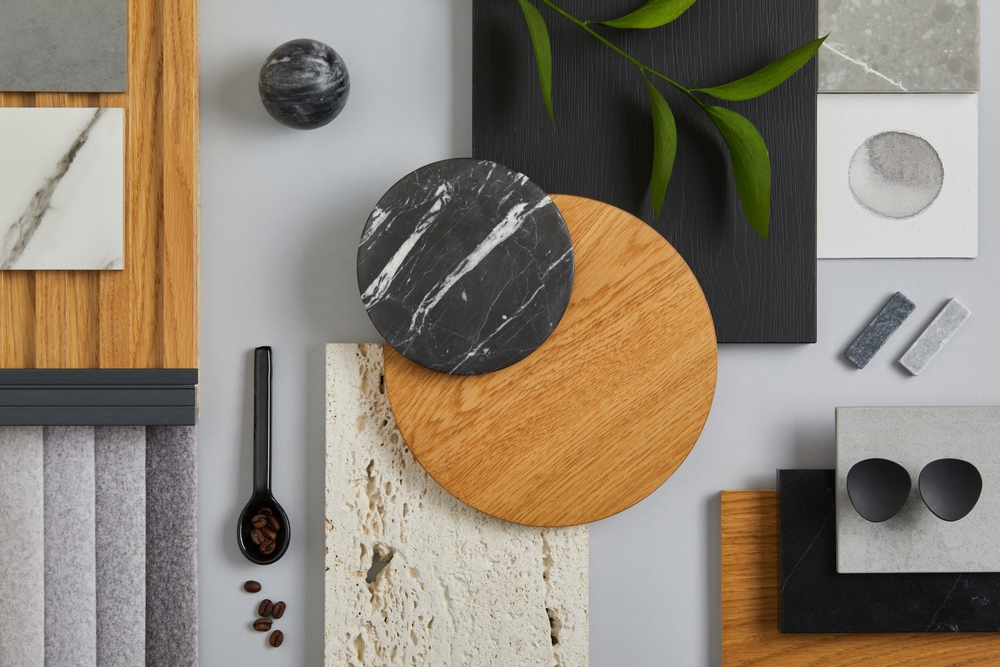
San Diego’s vibrant, coastal environment presents a unique opportunity for interior designers to experiment with a range of textures, transforming spaces into dynamic and inviting havens. Mixing textures in San Diego interiors not only enhances the overall aesthetic but also brings an additional layer of warmth and sophistication to a home. The key to successful design lies in balancing tactile elements, creating a harmonious yet visually stimulating environment. Understanding how to mix textures in interior design can be the game-changer in establishing a space that feels lived in, comfortable, and stylish.
The beauty of San Diego interior design lies in its ability to reflect the local natural surroundings while also incorporating contemporary elements. From the soft, sun-kissed beach textures to the raw edges of industrial chic, there is a seemingly endless array of ways to play with materials. Creating depth with textures is central to designing a space that is visually appealing and comfortable, offering a space that visitors and homeowners can truly feel connected to. As we delve deeper into the art of texture blending, let’s explore how using textures to create interest in San Diego design can elevate your interiors.
Embracing the Coastal Charm: Best Textures for San Diego Interiors
One of the defining features of San Diego design is its seamless connection to the outdoors. This city thrives on its natural beauty, from the sandy shores to the rugged cliffs. Coastal interiors typically celebrate a calm, breezy ambiance, relying on natural textures that reflect the oceanic surroundings. Using textures to create interest in San Diego design, such as mixing soft linens, woven rattan, and natural stone, brings that same fluidity into the home.
For coastal homes, consider using materials like driftwood, bamboo, jute, and seagrass, which not only evoke the laid-back spirit of the coast but also add organic warmth. These materials work well in living rooms, bedrooms, and even kitchens, establishing an inviting environment that’s perfect for unwinding after a long day at the beach. By combining rough textures like jute rugs with smoother surfaces like linen or cotton throws, you create a sophisticated, balanced look that offers both tactile and visual interest.
Stone is another texture that beautifully mirrors San Diego’s landscape. Whether you opt for polished granite countertops or rough-hewn travertine tiles, incorporating stone into your design adds an earthy, grounded feel. When paired with softer materials, such as plush velvet cushions or airy sheer curtains, stone creates a perfect juxtaposition between ruggedness and softness. This blend of textures creates layers within the space, offering depth and interest that can be enjoyed from different perspectives.
How to Mix Textures in Interior Design: Layering for Visual Appeal
One of the key strategies for mixing textures in San Diego interiors is layering. Layering allows for the blending of various materials in a cohesive way, creating depth without overwhelming the senses. It’s about creating a balance where each texture has space to breathe, but still works together to form a unified look. To begin, it’s important to establish a base texture—this could be something like a soft wool rug, a sleek leather couch, or a neutral-colored wall treatment like whitewashed wood.
Once you have established your foundational textures, start to layer in complementary materials. For example, you could add velvet throw pillows to a linen sofa or place a woven wicker coffee table in front of a plush fabric sectional. The key to successful layering is finding textures that contrast yet complement each other. Mixing hard and soft materials is an effective way to create a dynamic space. Hard textures like glass, wood, and metal often work beautifully against softer elements like textiles, fabric, or stone. This interplay of opposing materials adds richness to your design, making the room feel well-rounded and inviting.
One mistake many designers make is either over-layering textures or opting for too many similar materials. It’s essential to keep a sense of balance so that each element stands out without competing for attention. Stick to a few textures—preferably no more than five—and vary them in ways that highlight their differences. This approach ensures that the textures do not overwhelm the space but instead play off each other to create a harmonious and visually interesting environment.
Creating Depth with Textures: The Importance of Contrast
Another critical element in mixing textures interior design is using contrast to create depth. Contrast plays a vital role in designing interiors that feel inviting and well-thought-out. For example, pairing a smooth, reflective metal surface with a rough, matte wood element introduces both visual and tactile contrast, making each material stand out more distinctly. This contrast can be achieved through finishes as well—polished versus matte surfaces, glossy versus textured, and light versus dark tones all play into the creation of a visually interesting space.
Contrast isn’t just about creating variation in texture, however. Color plays a significant role in how textures are perceived. Lighter colors tend to make soft textures appear even more delicate, while darker shades give weight to rougher, more industrial materials. In San Diego design, where the natural landscape is full of sun-kissed neutrals and bright coastal colors, it’s important to find the right balance between these elements to make the most of your textures.
A great example of using contrast in texture can be seen in the integration of natural wood beams with soft textiles like linen curtains or velvet cushions. The juxtaposition between the hard, aged wood and the softness of fabric draws the eye to both elements. Adding natural fibers such as hemp, jute, or wool further enhances the contrast between the rough and the refined. This allows the textures to breathe, resulting in a layered, dimensional space that feels both cozy and sophisticated.
Mixing Textures for Functionality and Comfort
While visual appeal is important, it’s equally essential to consider how the textures you incorporate into your San Diego interiors contribute to comfort and functionality. Mixing textures interior is not only about aesthetics—it’s about creating a space that feels good to live in. The materials you choose for your home should provide both physical comfort and emotional warmth.
For instance, think about the tactile experience of running your hands over a plush velvet throw or sinking into a soft cotton bedspread after a long day. These elements go beyond their aesthetic value, contributing to the overall feel of a room. In coastal interiors, lightweight and breathable fabrics like cotton, linen, and bamboo allow for natural ventilation, creating a space that feels fresh and airy, even on the warmest days.
Additionally, textiles such as wool, chenille, or even faux fur can be used to introduce warmth and coziness into a space, especially during cooler months. Mixing textures like this allows you to create a comfortable and inviting atmosphere that is in tune with the seasonal changes. By selecting textures that are not only visually appealing but also provide comfort, you enhance the livability of your San Diego home. Combining natural materials like stone, wood, and textiles with luxurious accents creates a layered approach that feels cozy, yet refined.
Mastering the Balance of Texture in San Diego Design
The art of mixing textures in San Diego interiors is all about balance—combining rough and refined, soft and hard, organic and polished to create spaces that are both aesthetically appealing and functional. Whether you’re working with a modern beach house overlooking the Pacific or a more traditional home tucked away in the hills, understanding how to mix textures in interior design allows you to create a space that feels both unique and personal. By embracing the contrast between materials and using textures to create depth and interest, you can craft an environment that reflects the beauty of San Diego’s coastal surroundings while offering comfort and sophistication.
San Diego’s interiors are a testament to the power of textures in design. With the right blend, your space can come to life with a sense of warmth, dimension, and character, transforming any room into a haven that truly feels like home.
Need a Design & Build Company Near You?
Here at Ocean Drive Designs, we’re driven by a passionate curiosity about the human experience and a belief that every space should spark wonder and discovery. We specialize in creating luxurious interiors that are not only warm and timeless but also surprising and dramatic, blending beauty with functionality in ways that truly resonate. If you’re looking to transform your environment into an evocative, human-conscious space that meets your unique needs, we would love to bring your vision to life. Reach out to us today, and let’s create something extraordinary together!
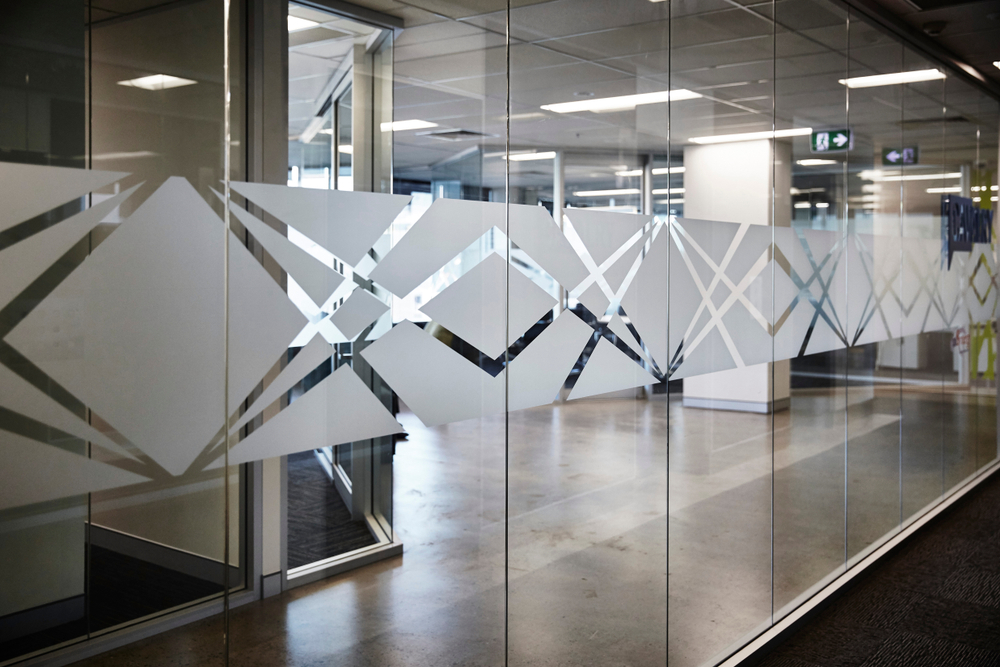
The evolution of office spaces continues to accelerate, with companies in San Diego embracing cutting-edge design trends to create functional, engaging, and sustainable workplaces. As businesses adapt to the demands of a hybrid workforce, technology integration, and employee well-being, office fit-outs in 2025 will reflect these priorities in innovative ways. From biophilic design to smart technology, the modern workplace is transforming into an environment that fosters productivity, collaboration, and overall satisfaction.
The Rise of Hybrid Workspaces
San Diego’s business landscape is embracing the hybrid work model, which has significantly influenced office fit-out designs. With employees splitting time between home and the office, companies are rethinking their spaces to cater to flexible working arrangements. The traditional cubicle layout is giving way to open, dynamic work zones that allow employees to choose between collaborative areas and quiet, focused spaces.
Hot desking and hoteling systems are becoming common, reducing the number of fixed workstations and enabling more fluid office use. Employers are investing in modular furniture that can be easily rearranged to accommodate different work styles and team sizes. Lounge-style seating, acoustic pods, and designated remote work integration areas are ensuring that employees remain connected, whether they are working in the office or logging in from home. The emphasis is on adaptability, ensuring that workspaces can evolve with the needs of employees and the business.
Biophilic Design: Bringing Nature Indoors
As San Diego enjoys a climate conducive to outdoor living, modern office fit-outs are leveraging this advantage by incorporating biophilic design elements. The connection between employees and nature is a growing priority, with research consistently showing that natural elements can reduce stress, boost creativity, and enhance overall well-being. Companies are responding by integrating greenery, natural light, and organic materials into their office spaces.
Large windows, skylights, and glass partitions are becoming standard features, maximizing daylight exposure and reducing reliance on artificial lighting. Green walls, potted plants, and even indoor gardens are being installed to purify the air and create a calming atmosphere. Many offices are also incorporating outdoor workspaces such as terraces and rooftop lounges, allowing employees to work in fresh air while enjoying scenic views of San Diego’s coastline and urban landscape. Materials like reclaimed wood, bamboo, and stone are gaining popularity, reinforcing the aesthetic and functional benefits of nature-inspired interiors.
Smart Technology and AI Integration
Technology is at the core of modern office fit-outs, and San Diego’s businesses are at the forefront of integrating smart solutions that enhance efficiency and user experience. The adoption of AI-driven tools and Internet of Things (IoT) devices is streamlining operations, optimizing energy consumption, and improving workplace security.
Touchless entry systems, automated climate control, and smart lighting are becoming standard in office designs, reducing the need for manual adjustments and creating a more seamless experience for employees. AI-powered scheduling systems are helping organizations manage meeting rooms and workspaces more efficiently, ensuring optimal use of office resources. With virtual collaboration tools embedded in office infrastructure, remote employees can engage seamlessly with their in-office counterparts.
Sustainability is another major driver of smart office technology. Companies are leveraging energy-efficient solutions, such as motion-sensor lighting and climate-responsive HVAC systems, to reduce their carbon footprint. Additionally, smart waste management systems are being introduced to monitor and minimize waste production, aligning with corporate sustainability goals.
Employee Well-Being and Inclusive Design
The shift toward people-centric office design is one of the most significant trends in modern fit-outs. Companies in San Diego are prioritizing employee well-being by crafting work environments that promote physical, mental, and emotional health. Ergonomic furniture, adjustable workstations, and wellness rooms are becoming essential components of contemporary office design.
Wellness-centric design goes beyond ergonomic chairs and sit-stand desks. Offices are integrating features such as meditation rooms, nap pods, and fitness areas to support employees’ holistic well-being. Some companies are also offering wellness programs, including on-site yoga, mental health resources, and healthy snack options to encourage better lifestyle choices.
Inclusivity is another key aspect of modern office fit-outs. Design strategies are ensuring that workspaces are accessible to employees of all abilities, with features such as height-adjustable desks, wheelchair-friendly layouts, and quiet zones for neurodiverse individuals. Companies are also embracing cultural inclusivity by creating spaces that cater to diverse work styles and preferences, such as prayer rooms, lactation areas, and gender-neutral restrooms.
The Future of Office Fit-Outs in San Diego
Looking ahead, the future of office fit-outs in San Diego will be shaped by a continued emphasis on flexibility, sustainability, and technology. The evolution of workplace culture is prompting businesses to rethink how office design can enhance both productivity and employee satisfaction.
As companies experiment with new layouts and hybrid working models, we can expect even greater personalization of office environments, with employees having more control over their workspace settings. Augmented reality (AR) and virtual reality (VR) may also play a role in office design, allowing businesses to create immersive environments for collaboration and training.
Sustainability will remain a top priority, with companies integrating renewable energy sources, upcycled materials, and carbon-neutral construction methods into their office spaces. With San Diego being a hub for innovation, we can anticipate a growing number of workspaces that seamlessly blend technology, nature, and human-centric design to create a new era of office environments.
Conclusion
The modern office is no longer just a place to work—it is a space that fosters creativity, well-being, and connection. As businesses in San Diego embrace the trends of 2025, they are redefining what it means to create a workplace that truly supports its people and the planet.
Need a Design & Build Company Near You?
Here at Ocean Drive Designs, we’re driven by a passionate curiosity about the human experience and a belief that every space should spark wonder and discovery. We specialize in creating luxurious interiors that are not only warm and timeless but also surprising and dramatic, blending beauty with functionality in ways that truly resonate. If you’re looking to transform your environment into an evocative, human-conscious space that meets your unique needs, we would love to bring your vision to life. Reach out to us today, and let’s create something extraordinary together!
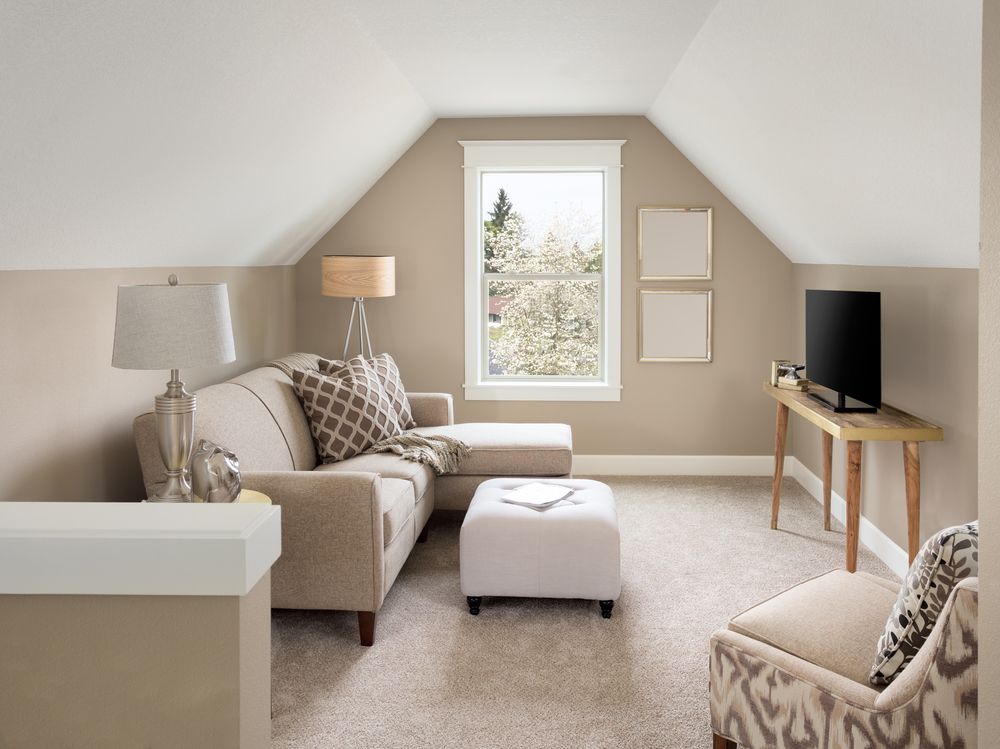
San Diego is a beautiful city with a high demand for housing, making smaller homes and apartments a common reality for many residents. Whether you live in a cozy downtown studio or a compact beachside bungalow, maximizing your space is essential to maintaining comfort and functionality. The challenges of small-space living include limited storage, multi-functional requirements, and ensuring the space remains aesthetically pleasing without feeling cluttered. Designing effectively requires creativity, smart furniture choices, and an understanding of how to use light and color to create the illusion of a more expansive home. By embracing the principles of minimalism and organization, you can make the most of your space without compromising on style or convenience.
Strategic Furniture Selection and Placement
One of the key strategies for optimizing a small space is choosing the right furniture. In San Diego, where indoor-outdoor living is highly valued, incorporating versatile and space-saving furniture is crucial. Opting for pieces with multiple functions, such as a sofa bed, a dining table with foldable leaves, or a storage ottoman, can help conserve space while adding practicality. Furniture placement is just as important as the pieces themselves. Floating furniture, such as wall-mounted desks and shelves, can free up floor space while maintaining storage. Utilizing vertical space with tall bookshelves and mounted cabinets allows you to store essentials without encroaching on valuable living areas. By carefully selecting and arranging furniture, you can make your small space feel open and uncluttered.
Lighting and Color Techniques to Enhance Space
Lighting and color play a significant role in transforming a small space. Natural light is a valuable asset in San Diego homes, thanks to the city’s sunny climate. Maximizing natural light through large windows, sheer curtains, and reflective surfaces like mirrors can create an airy and open ambiance. When artificial lighting is needed, a combination of ambient, task, and accent lighting can prevent shadows and make a room feel more spacious.
Color choices also impact the perception of space. Light and neutral tones, such as whites, creams, and soft pastels, can make a room appear larger and more inviting. Darker colors tend to absorb light and make spaces feel more confined. However, incorporating pops of color through accent walls, décor, or artwork can add personality and vibrancy without overwhelming the space. Thoughtfully balancing light and color can significantly enhance the livability of a small home.
Smart Storage Solutions for Small Homes
Storage can be a challenge in small San Diego homes, but creative solutions can help you maximize every inch of your space. Utilizing under-bed storage, hidden compartments in furniture, and built-in shelving can create additional room for belongings without contributing to clutter. Decluttering regularly is also essential to maintaining an organized and spacious environment. Adopting a “one in, one out” rule—where bringing in a new item requires removing an old one—helps keep possessions in check.
Closets and kitchen spaces benefit from organization tools such as stackable bins, drawer dividers, and hanging racks. Pegboards can be installed in kitchens, garages, or home offices to create easily accessible storage for frequently used items. Additionally, making use of overlooked areas, such as the backs of doors and corners, can provide additional storage options. By embracing these smart storage solutions, you can maintain a tidy and functional living space.
Bringing the Outdoors In: Biophilic Design in Small Spaces
San Diego’s connection to nature makes biophilic design an excellent approach for small-space living. Incorporating natural elements such as indoor plants, natural wood textures, and earthy tones can create a serene and refreshing environment. Small balconies and patios can be transformed into lush outdoor retreats with vertical gardens, compact furniture, and cozy lighting.
Indoor plants not only enhance aesthetics but also improve air quality and create a calming atmosphere. Hanging plants, wall-mounted planters, or even a small herb garden in the kitchen can bring greenery into a small home without sacrificing floor space. Additionally, using materials like bamboo, rattan, or stone in furniture and décor can reinforce a connection to the natural world. Emphasizing outdoor elements within the home makes a small space feel more inviting and in harmony with the beautiful San Diego surroundings.
Conclusion
Designing for small spaces in San Diego requires thoughtful planning and creativity, but with the right strategies, you can transform your home into a functional and stylish retreat. By prioritizing smart furniture choices, optimizing lighting and color, incorporating effective storage solutions, and embracing biophilic design, you can make the most of your space while maintaining comfort and beauty. Small-space living does not mean sacrificing quality of life—it means reimagining your home to fit your needs in a way that maximizes its potential.
Need a Design & Build Company Near You?
Here at Ocean Drive Designs, we’re driven by a passionate curiosity about the human experience and a belief that every space should spark wonder and discovery. We specialize in creating luxurious interiors that are not only warm and timeless but also surprising and dramatic, blending beauty with functionality in ways that truly resonate. If you’re looking to transform your environment into an evocative, human-conscious space that meets your unique needs, we would love to bring your vision to life. Reach out to us today, and let’s create something extraordinary together!
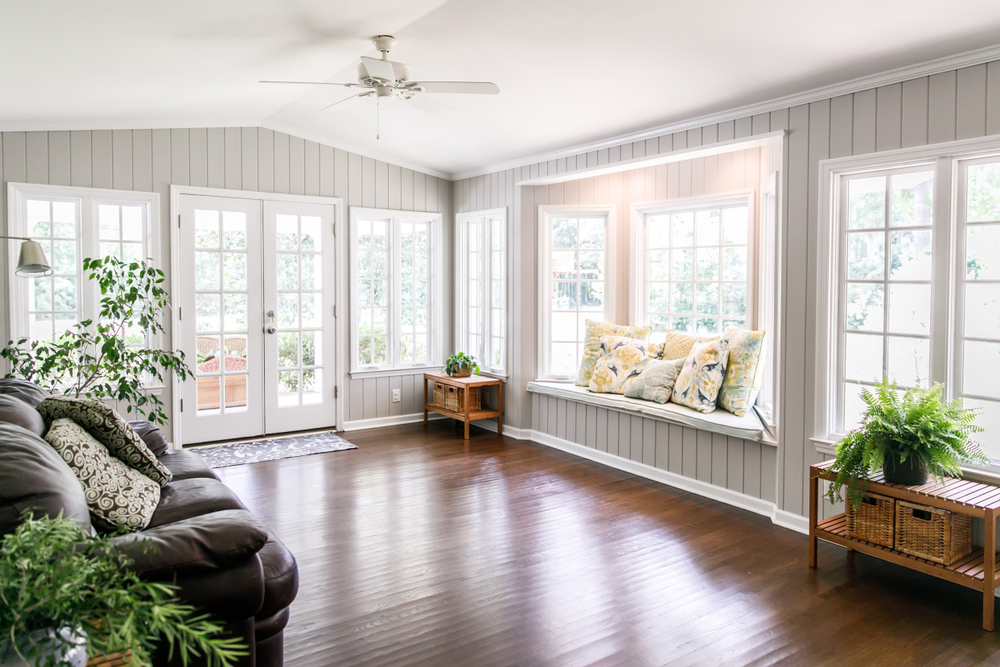
San Diego is known for its beautiful weather, stunning coastal views, and abundant sunshine year-round. Homeowners in the region have a unique opportunity to maximize natural light, making their homes feel brighter, more spacious, and energy-efficient. Whether you are renovating your current home or building a new one, there are several design strategies that can help you harness the natural beauty of sunlight. From architectural modifications to decor choices, this guide explores the best ways to brighten up your living space while enhancing both comfort and aesthetics.
Architectural Adjustments for Maximum Sunlight
One of the most effective ways to increase natural light in a home is through architectural modifications. The design and placement of windows, skylights, and glass doors play a crucial role in determining how much sunlight enters your home. In San Diego, where sunshine is plentiful, installing larger windows or floor-to-ceiling glass doors can create a seamless connection between indoor and outdoor spaces.
Skylights are another excellent addition, especially in areas where traditional windows may not be practical, such as hallways, bathrooms, and kitchens. Modern skylight designs include options with UV filters and automatic shades to prevent overheating while still allowing for abundant light. Additionally, the orientation of a home can significantly impact natural lighting. South-facing windows typically receive the most sunlight throughout the day, while east-facing ones provide gentle morning light. When designing or remodeling a home, strategic placement of windows and openings can optimize natural illumination and reduce the need for artificial lighting.
Choosing the Right Colors and Materials
The colors and materials used in a home’s interior have a significant impact on how light is reflected and distributed. Lighter colors, such as whites, creams, and pastels, help amplify natural light by reflecting it rather than absorbing it. Painting walls in soft, neutral tones can make a space feel more open and airy, enhancing the effect of sunlight streaming in.
Beyond paint colors, the choice of flooring and surface materials also plays a role in light distribution. Glossy or semi-gloss finishes on floors, countertops, and furniture can help bounce light around a room, making it appear brighter. Materials like polished stone, glass, and lightly stained wood contribute to a luminous and inviting atmosphere. If you prefer darker tones, consider using them as accent colors rather than dominant hues to prevent the space from feeling closed off or dim.
Smart Window Treatments for Light Control
While large windows and glass doors are fantastic for maximizing natural light, they also require thoughtful window treatments to balance light control and privacy. Choosing the right blinds, curtains, or shades can enhance the brightness of a space while preventing excessive glare or heat buildup. Sheer or light-colored curtains allow sunlight to filter through without darkening the room, making them ideal for living rooms and bedrooms.
For homeowners concerned about heat, especially during the warmer months, solar shades or UV-filtering blinds are excellent options. These treatments reduce glare and heat gain while still allowing ample daylight into the home. Layering window treatments, such as using sheer curtains combined with heavier drapes, can offer flexibility—providing full brightness during the day and privacy at night. Additionally, motorized blinds or smart window coverings can be programmed to adjust automatically, optimizing light levels based on the time of day.
Strategic Use of Mirrors and Reflective Surfaces
One of the simplest and most cost-effective ways to enhance natural light in a home is through the use of mirrors and reflective surfaces. Mirrors placed opposite windows can effectively double the amount of light in a room by reflecting it back into the space. This trick works particularly well in smaller rooms or darker corners where natural light may not reach as easily.
Beyond mirrors, incorporating reflective materials such as metallic fixtures, glass tabletops, and glossy tiles can further enhance brightness. Mirrored or glass furniture pieces, such as coffee tables or console tables, help create an open and airy ambiance. Additionally, strategically positioning artwork with metallic or glossy finishes can contribute to the diffusion of light throughout a space, making the home feel more illuminated and spacious.
Embracing an Open-Concept Layout
The layout of a home significantly impacts the flow of natural light. Open-concept designs, which minimize walls and barriers, allow sunlight to travel more freely throughout the space. By removing unnecessary partitions, homeowners can create a seamless connection between different rooms, enhancing brightness and a sense of openness.
If removing walls entirely is not an option, opting for glass partitions or sliding doors can help maintain a division between spaces while still allowing light to pass through. Additionally, using furniture with a lighter visual weight, such as open shelving or low-profile pieces, prevents obstruction of natural light pathways. Even simple adjustments, like rearranging furniture to avoid blocking windows, can make a significant difference in maximizing daylight within a home.
Conclusion
By implementing these design tips and tricks, San Diego homeowners can make the most of the region’s abundant sunshine, creating bright, welcoming, and energy-efficient living spaces. Whether through architectural modifications, thoughtful color choices, or smart decor strategies, embracing natural light can transform the ambiance of any home, making it feel more vibrant and inviting year-round.
Need a Design & Build Company Near You?
Here at Ocean Drive Designs, we’re driven by a passionate curiosity about the human experience and a belief that every space should spark wonder and discovery. We specialize in creating luxurious interiors that are not only warm and timeless but also surprising and dramatic, blending beauty with functionality in ways that truly resonate. If you’re looking to transform your environment into an evocative, human-conscious space that meets your unique needs, we would love to bring your vision to life. Reach out to us today, and let’s create something extraordinary together!
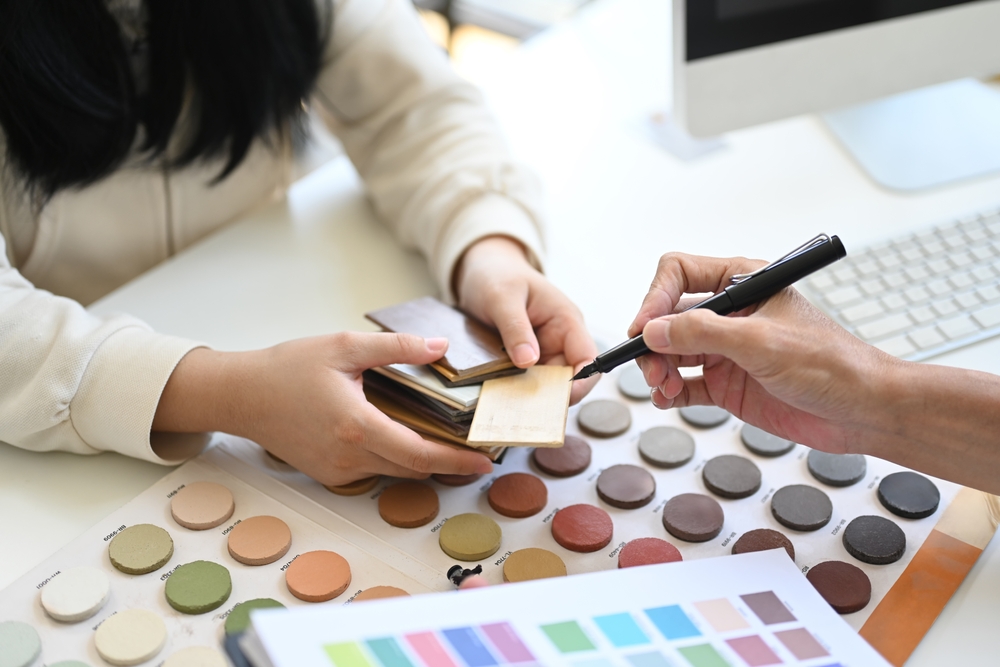
Finding the perfect interior designer for your project can transform your vision into a stunning reality. However, achieving this dream requires asking the right questions to ensure that the professional you hire aligns with your goals, style, and budget. This blog explores the essential questions to ask an interior designer to ensure your project is a success.
Why Asking the Right Questions Matters
Hiring an interior designer is a significant investment, and like any partnership, effective communication is key. Asking interior designer questions during your initial meetings helps establish trust and transparency. It also ensures that you and your designer are on the same page regarding your project’s objectives and expectations.
Preparing for the Initial Meeting
Before diving into questions to ask a designer, it’s essential to prepare yourself. Define your project scope, budget, and preferred style. Gather inspiration from magazines, websites, or social media to provide a clear idea of your vision. This preparation will help the interior designer understand your needs and allow you to assess their suitability for your project.
Questions to Ask About Experience and Background
Understanding an interior designer’s background is critical in evaluating their expertise and suitability for your project. Consider these questions:
What Is Your Design Philosophy?
This question helps you gauge the designer’s overarching approach to design. Are they minimalist, modern, traditional, or eclectic? Their answer will help you determine if their style aligns with your preferences.
What Is Your Experience With Projects Like Mine?
If you’re renovating a historic home, designing a modern office, or redecorating a small apartment, you want a designer with relevant experience. Asking what to ask an interior designer about their experience ensures they have the skills and knowledge to tackle your specific project.
Can You Provide References or Show a Portfolio?
Viewing a designer’s portfolio or speaking with past clients offers insights into their work quality and professionalism. Pay attention to details in their portfolio that resonate with your vision.
Budget and Cost-Related Questions
Finances play a major role in any design project. Establishing a clear understanding of costs and budgeting is essential to avoid surprises down the road.
What Are Your Fees and Payment Structure?
Some designers charge hourly rates, while others use a flat fee or a percentage of the project cost. Knowing this upfront will help you decide if their pricing aligns with your budget.
Can You Work Within My Budget?
Discussing your budget early allows the designer to evaluate whether they can deliver the results you want without exceeding your financial limits. It also provides clarity about material and labor costs.
Are There Additional Costs I Should Anticipate?
Unexpected expenses can derail a project. Ask about potential extra charges, such as consultation fees, travel expenses, or costs for revisions.
Questions About the Design Process
Understanding how the designer works ensures a smooth collaboration. It’s essential to delve into their process and expectations.
How Do You Approach a New Project?
This question provides insight into their planning and creative process. It will also reveal how they incorporate client feedback and preferences into their designs.
How Do You Handle Revisions?
Design projects often involve changes and adjustments. Discussing their process for handling revisions ensures that both parties understand how to navigate changes efficiently.
What Is Your Timeline for Completion?
Knowing the estimated timeline helps set realistic expectations and allows you to coordinate with other contractors or personal commitments.
Questions About Collaboration
Successful projects require collaboration between you and your designer, as well as between the designer and other contractors or vendors. These questions ensure that communication flows seamlessly.
How Will We Communicate During the Project?
Ask whether they prefer email, phone calls, or in-person meetings. Regular updates are crucial for staying informed about progress and addressing any concerns promptly.
Do You Work With Specific Contractors or Vendors?
Some designers have established relationships with trusted professionals. Understanding their network can streamline the process and ensure high-quality results.
What Level of Involvement Do You Expect From Me?
While some clients prefer to be hands-on, others are more comfortable stepping back. Clarify your preferred level of involvement to ensure expectations align.
Questions About Style and Personalization
Every client has unique tastes, and your designer’s ability to translate your preferences into a cohesive design is critical.
How Do You Ensure the Design Reflects My Style?
Your space should feel personal and authentic. This question ensures the designer prioritizes your preferences while incorporating their expertise.
Can You Incorporate Existing Furniture or Decor?
If you have pieces you want to keep, such as heirlooms or sentimental items, ensure the designer can work them into the overall design seamlessly.
What Trends or Features Do You Recommend for My Space?
Experienced designers stay updated on the latest trends and innovations. Their recommendations can inspire ideas you hadn’t considered and elevate your project.
Troubleshooting and Problem-Solving Questions
Even the best-planned projects encounter challenges. Asking about their approach to problem-solving helps gauge their professionalism and adaptability.
How Do You Handle Unexpected Issues?
Delays, unavailable materials, or budget constraints can arise. A good designer will have strategies for addressing these issues while minimizing stress.
Can You Provide Examples of Challenges From Previous Projects?
Hearing how they navigated past challenges provides insight into their problem-solving skills and resilience.
What Happens If We Disagree on an Element of the Design?
Disagreements are natural in creative collaborations. Understanding how they approach conflicts ensures a smoother working relationship.
Finalizing the Decision
After gathering information, reflect on the designer’s responses and your overall impression. Consider their experience, portfolio, and communication style. Ultimately, trust your instincts when deciding who will bring your vision to life.
Summary of Key Takeaways
- Prepare Yourself: Define your project’s scope, budget, and inspiration before meeting potential designers.
- Ask About Experience: Focus on questions that reveal their expertise and suitability for your specific needs.
- Clarify Costs: Ensure transparency regarding fees, budgeting, and potential additional expenses.
- Understand Their Process: Gain insight into their workflow, timeline, and approach to revisions.
- Prioritize Collaboration: Establish communication preferences and clarify roles to ensure a smooth partnership.
- Assess Style Compatibility: Confirm that their aesthetic aligns with your vision and that they value personalization.
- Evaluate Problem-Solving Skills: Ensure they can handle challenges professionally and creatively.
By asking these questions, you’ll be well-equipped to select an interior designer who meets your expectations and ensures a successful project. Investing time in this interview process will pay off in a beautifully designed space that reflects your style and needs.
Need a Design & Build Company Near You?
Here at Ocean Drive Designs, we’re driven by a passionate curiosity about the human experience and a belief that every space should spark wonder and discovery. We specialize in creating luxurious interiors that are not only warm and timeless but also surprising and dramatic, blending beauty with functionality in ways that truly resonate. If you’re looking to transform your environment into an evocative, human-conscious space that meets your unique needs, we would love to bring your vision to life. Reach out to us today, and let’s create something extraordinary together!





